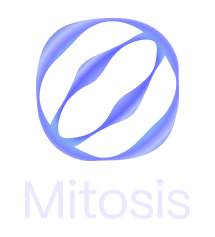Mitosis: Redefining Blockchain Efficiency, A Next-Gen Layer 1 Solution

Mitosis is a next-generation Layer 1 blockchain designed for scalability, security, and efficiency. It achieves this by separating execution from consensus, allowing for high throughput and reduced congestion. Built with Ethereum’s security model, Mitosis ensures a robust and trustless environment while maintaining full EVM compatibility, making it easy for developers to deploy existing smart contracts. Additionally, it utilizes CometBFT, a Byzantine Fault Tolerant (BFT) consensus mechanism, to enhance speed and reliability. This combination of features positions Mitosis as a powerful solution for decentralized applications (dApps) and blockchain scalability challenges. How Mitosis Stands Out from Other Layer 1 Solution
Mitosis is a next-generation Layer 1 blockchain designed to overcome the limitations of traditional monolithic L1 chains by focusing on scalability, security, and interoperability. It achieves this through several key innovations: 1. Separation of Execution and Consensus Unlike traditional blockchains where execution, consensus, and data availability happen within a single layer, Mitosis decouples execution from consensus. This modular approach brings significant advantages: Consensus Layer: Responsible for validating transactions and achieving finality. Ensures network security and maintains blockchain integrity. Uses CometBFT, a Byzantine Fault Tolerant (BFT) consensus engine that enhances performance and security. Execution Layer: Processes smart contracts and transactions efficiently. Optimized for high throughput and reduced congestion. Enables seamless scaling by allowing execution nodes to operate independently from consensus nodes. Why It’s Innovative? Most L1 blockchains handle execution and consensus together, leading to congestion and inefficiencies (e.g., Ethereum pre-rollups). Mitosis, by separating these processes, allows each layer to scale independently, leading to faster transaction processing and better resource allocation. 2. Ethereum Security Mitosis enhances its security by leveraging Ethereum’s well-established security mechanisms. While it operates as an independent L1, it likely incorporates Ethereum’s validator network, staking mechanisms, or finality guarantees to secure its transactions. Why It’s Innovative? Ethereum is one of the most battle-tested and secure blockchain networks. By integrating Ethereum’s security properties, Mitosis ensures robust protection against attacks while maintaining decentralization. Provides Ethereum-level security without Ethereum’s scalability limitations. 3. EVM Compatibility? Mitosis is fully EVM-compatible, meaning developers can deploy Ethereum-based smart contracts and dApps on Mitosis without modification. Why It’s Innovative Ethereum has the largest developer ecosystem. Mitosis taps into this by ensuring seamless migration of Ethereum-based applications. Existing Ethereum toolchains (MetaMask, Remix, Hardhat, etc.) work natively with Mitosis. Developers don’t need to learn a new programming language—Solidity-based contracts work out of the box. This makes Mitosis highly attractive to Ethereum developers who want better scalability and lower fees without sacrificing compatibility. 4. CometBFT Consensus Mechanism Mitosis utilizes CometBFT (formerly Tendermint Core) as its consensus engine. This offers several advantages over traditional Proof-of-Work (PoW) or slow Proof-of-Stake (PoS) mechanisms: Fast Finality: Transactions are instantly finalized, unlike probabilistic finality in PoW chains (e.g., Bitcoin, Ethereum pre-Merge). Byzantine Fault Tolerance (BFT): The network remains secure even if some validators act maliciously. High Throughput: CometBFT’s optimized consensus allows thousands of transactions per second (TPS), making Mitosis ideal for high-demand applications. Why It’s Innovative? CometBFT’s efficiency outperforms traditional PoS and PoW blockchains by significantly reducing block times and achieving instant finality. Enhanced security through BFT consensus, ensuring reliability even in the presence of malicious actors. Better scalability for dApps, DeFi protocols, and enterprise use cases. 5. High Performance and Scalability Mitosis is designed for high throughput and minimal latency through its modular execution-consensus model. This results in: Faster transaction processing without congestion. Lower gas fees compared to traditional L1 blockchains. Scalable architecture where execution nodes can be upgraded or added without impacting consensus. Why It’s Innovative? Unlike monolithic blockchains (e.g., Ethereum pre-rollups, Solana), Mitosis avoids bottlenecks by decoupling execution from validation. The modular approach allows network upgrades and optimizations without hard forks. Smoother user experience due to reduced latency and high transaction speed. 6. Interoperability & Cross-Chain Compatibility Mitosis is built with cross-chain capabilities, allowing seamless interaction with other blockchain ecosystems. This enables: Cross-chain asset transfers (moving tokens between Mitosis, Ethereum, and other chains). Interoperability with DeFi and dApps across multiple networks. Bridging solutions that reduce fragmentation and improve liquidity flow. Why It’s Innovative? Most blockchains operate in isolated silos, limiting their usability. Mitosis enables seamless cross-chain functionality, increasing its real-world applicability. Interoperability with Ethereum means users can leverage Ethereum’s ecosystem while benefiting from Mitosis’ speed and efficiency. Supports multi-chain dApp development, helping developers build applications that work across multiple blockchains. Why Mitosis is a Game-Changer? By combining Ethereum compatibility, CometBFT consensus, and a modular execution-consensus design, Mitosis provides: ✅ High-speed transactions with instant finality. ✅ Low fees and scalable architecture for mass adoption. ✅ Ethereum-level security without the scalability trade-offs. ✅ Seamless migration for Ethereum developers and smart contracts. ✅ Cross-chain interoperability for a truly connected blockchain ecosystem. These innovations position Mitosis as a next-generation L1 blockchain that improves upon traditional L1 solutions while maintaining security, decentralization, and performance.
Comments ()